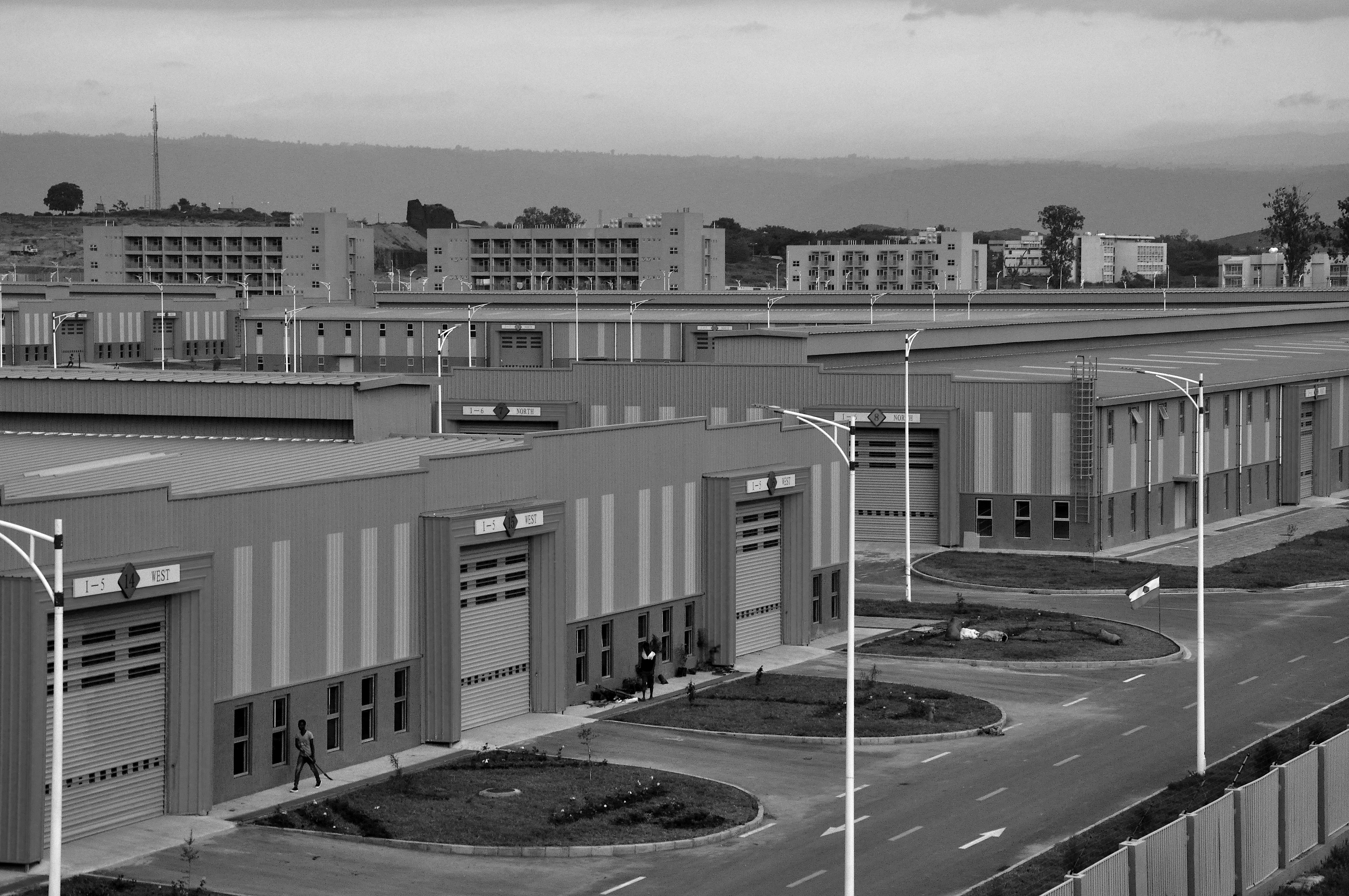
The Ethiopian Growth and Transformation Plan (GTP) has set goals to transform the agriculture-led economy of the country into industry-led one. The GTP states that the country has set a goal to increase the sector’s total GDP share to 6.2 percent.
Following this plan, several industrial parks have been constructed while the construction of other industrial parks is going well. And the country’s favorable climatic condition makes the country to be in a unique position to grow diversified agricultural products, which, in turn, could serve as an input and impetus to the industrial parks.
Currently, no less than ten industrial parks are taking shape throughout the country.More than 43 thousand jobs have been created in industrial parks within the past couple of months alone and 9 million USD worth products have been exported to the international market in February, 2019 only.
Director of Planning and Management at Industrial Park Development Corporation Tilahun Gemechu said that the industrial parks are playing a significant role on the national economy in various ways.
Generating tangible hard currency, creating huge job opportunities to the youth, enhancing technology exchange, among others, are the major priorities of the government while expanding industrial parks throughout the country. If the industrial parks that commence operation in recent time created this much job opportunities, it would be possible to predict huge amount of open employment opportunities when all the industrial parks become operational in full swing, he added.
As it is known, the country has also laid cornerstone for further industrial parks construction beyond the ones that are currently operational. And it is believed that youths across the country will access job opportunities at their doorsteps.
On the other hand, the industrial parks have also become successful in terms of strengthening the country’s endeavors of generating more foreign exchange earnings. More than nine million USD have been generated in the month of February from export items that hailed from five industrial parks [Hawassa, Bole Lemi, Mekele, Kombolcha and Adama] alone. “Thus, it manifests how much the industrial parks could solve foreign exchange earning shortage in the future when they start to operate with full potential.
The construction and completion of additional six industrial parks is also going well, and is expected to be operational in the near future”, he said.
According to him, the Corporation is also undertaking feasibility studies on future construction of other industrial parks as well.
In regards to investors partici -pation in the industrial parks, expatriate investors exceed in number than local investors. Having international investors experience can be beneficiary to local investors as it could serve as a motivation to them, after seeing and understanding the potential positive profit in the area. “And the corporation prioritizes local investors to join the industrial parks. Thus, in the future the corporation will exercise different incentives to strengthen local investors’ participation in different industrial parks countrywide.”
Rendering effective industrial park services, fulfilling infras tructural requirements, promoting competitive human power, facilitating shade distribution and access, among others, are the major assignments of industrial parks, he noted.
The abundant resources that can be utilized for industrial inputs are vital elements to the industrialization aspirations that could catapult Ethiopia to middle income economy.
Apart from accomplishing such mega industrial parks constructions, it requires the country to promote agricultural commercialization, exp- erts recommend. The vast arable land and competent human power have assisted the government’s feasible policies and strategies that aims smooth and successful journey towards industrialization. And it is extremely important to combine these resources to expedite the country’s all-round development.
The ongoing second Growth and Transformation Plan (GTP II) of Ethiopia, and its industrial development strategy are agricu ltural-based, manufacturing sector-driven and export-led development. The GTP pursued growth through export-driven industrialization strategy that focuses on labor and capital intensive manufacturing industries, export-oriented and import substituting industries. And with this in mind, industrial parks not only can play a huge constructive role in the aforementioned aspirations, they can also contribute to rapid technology and know-how transfer, and have broad linkages with the rest of the economy, and use agricultural products as inputs (Agro-processing).
The manufacturing industries that have given due attention are agro- processing industries, textile and clothing, food and beverage industries, tannery and leather goods, pharmaceutical industries, chemicals and chemical products industries, paper and paper products, plastic industries, building materials, glass & glass products, metal and metal engineering, among others priorities of the government.
In general, in addition to playing a crucial role in raising foreign currency and increasing employment opportunity, industrial parks can also support the agro-processing sector by strengthening and sustaining the bond between the agriculture and industrial sector, which is pivotal to the country’s structural transformation aspirations.
The Ethiopian Herald April 10, 2019
BY TEWODROS KASSA




